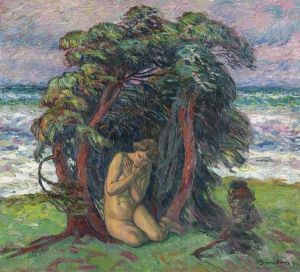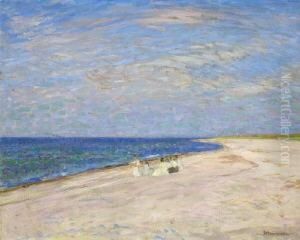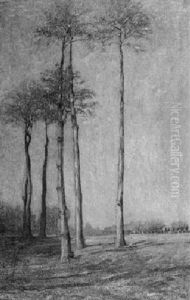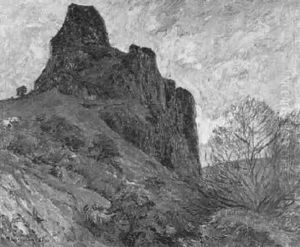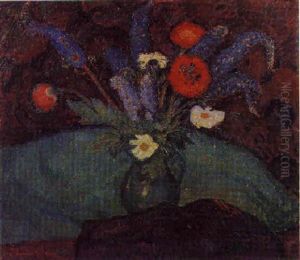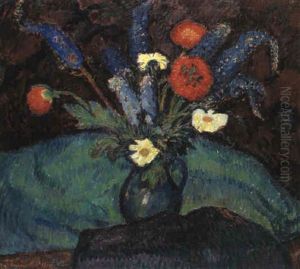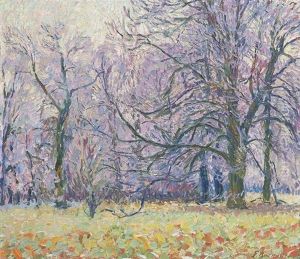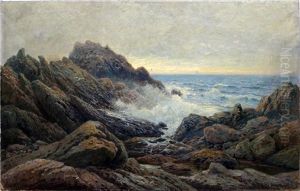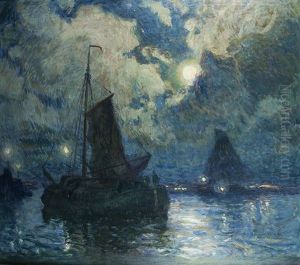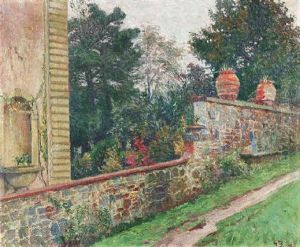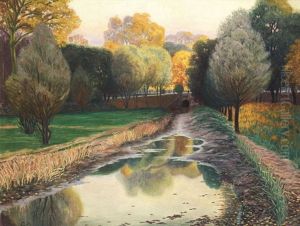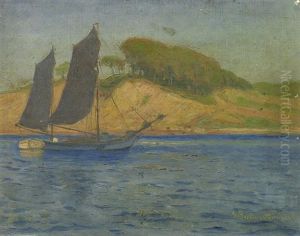Georg Burmester Paintings
Georg Burmester was a German painter who made significant contributions to the art world during the late 19th and early 20th centuries. Born on March 26, 1864, in Hamburg, Germany, Burmester grew up in an era that was rich in cultural and artistic development. He initially studied architecture before fully committing to his passion for painting.
Burmester's early works were influenced by the naturalistic style, a trend that was popular among artists of his time. He was particularly known for his landscape paintings, which often captured the beauty and serenity of the German countryside. His attention to detail and ability to portray light and atmosphere in his work earned him a reputation as a skilled landscape painter.
In the course of his career, Burmester traveled extensively throughout Europe, which allowed him to encounter various artistic styles and techniques. These experiences broadened his artistic vision and contributed to the evolution of his style. He became associated with the Düsseldorf school of painting, a group that was known for its academic approach to art and an emphasis on historical and allegorical subjects.
Despite the changing artistic trends of the time, such as the rise of Impressionism and later Expressionism, Burmester remained relatively traditional in his approach to painting. However, he did not completely isolate himself from the influences of these movements, and some elements of modernism can be seen in his later works.
Burmester's contribution to the art world was not only through his paintings but also through his role as an educator. He taught at the Kunstgewerbeschule in Hamburg and later at the Düsseldorf Academy of Arts, where he influenced a new generation of artists.
Georg Burmester died on February 7, 1936, in Düsseldorf, Germany. His work continues to be appreciated for its craftsmanship and the tranquil beauty it captures, and his paintings can be found in German museums and private collections.



